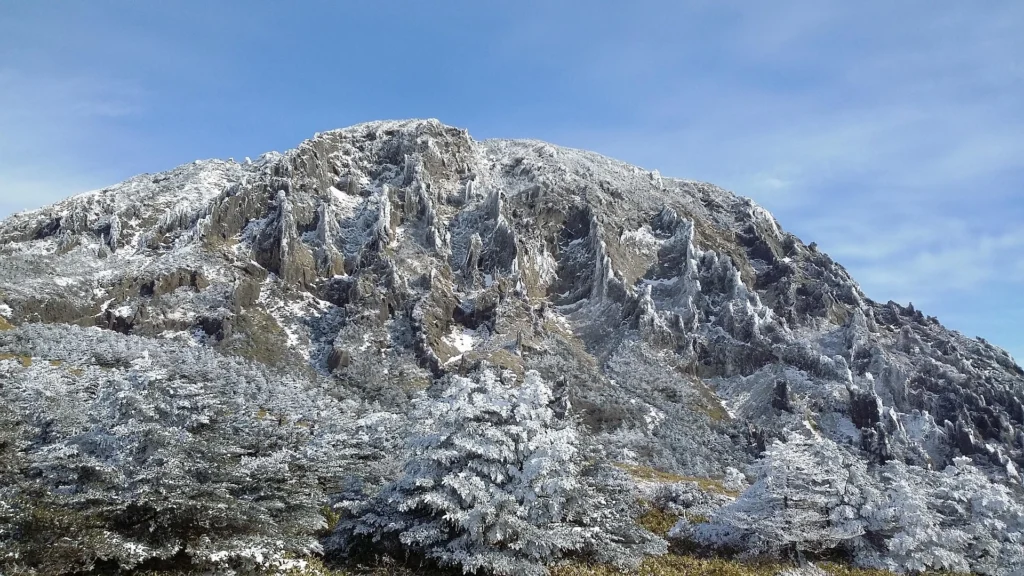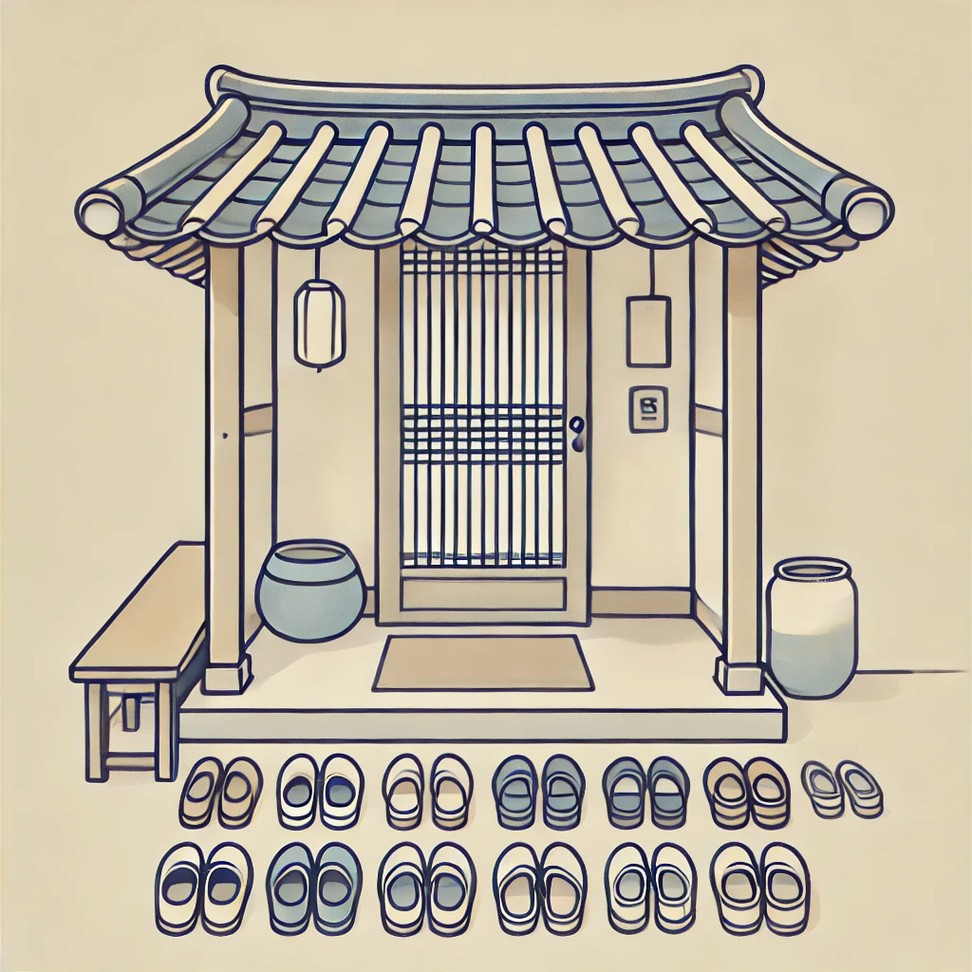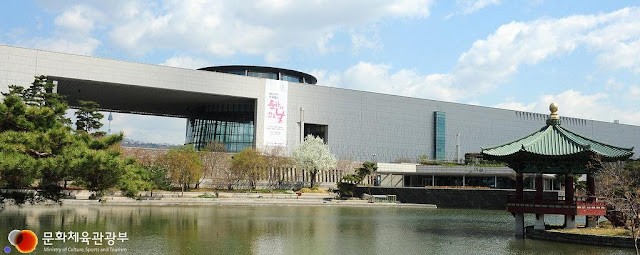Baengnokdam crater, Hallasan Mountain [Photo Credit] Pixabay
TL;DR – Discover Korea’s most soul‑healing forests.
Step beyond Seoul and Busan into serene forests—from ancient cedar groves in Jeju to pine‑lined temple trails in Gyeongbuk, bamboo forests in Jeollanam, and coastal woodland in Chungnam.
Reconnect with nature via easy‑access trails, eco‑parks, healing forests, and temple stays—all with transport tips, opening hours, fees, and what makes each spot special.
Whether you're craving fresh forest air, seasonal blooms, or quiet reflection in green solitude—this guide takes you off‑map, deeper into Korea’s green heart.
Seoul and Busan have become world-renowned travel destinations, packed with so many attractions, flavors, and experiences that even a week might feel too short to explore them all. But if you take a moment to step away from the city buzz, you’ll discover another side of Korea—one that’s quieter, greener, and just as unforgettable.
Breathe in the crisp air, walk beneath ancient trees, and feel the embrace of landscapes untouched by concrete and neon. These natural treasures offer a kind of beauty and peace you won’t find in the cities.
Even as a Korean, I haven’t seen all that this small peninsula has to offer—there are just that many hidden gems scattered across the country. So today, we’re taking you beyond the city limits, into Korea’s most awe-inspiring forests. Here are 10 must-visit forests that will move your heart and reconnect you with nature. Let’s begin.
Did you know that nearly 70% of Korea is covered in mountains? No matter where you are—whether in a bustling city or the quiet countryside—you’ll always be surrounded by scenic peaks. Just a short walk from any town, you’ll often stumble upon lush forest paths perfect for a peaceful retreat.
Today, I’m introducing 10 breathtaking forest destinations with crisp, fresh air and vibrant greenery. If you plan a trip to Korea, set aside time to recharge your body and mind in these serene landscapes.
📝 Important Notes:
– All information is based on January 2025 data.
– Listed prices are for adults only.
– Transportation costs refer to one-way fares unless otherwise specified.
– Airfare represents a round-trip ticket between Gimpo Airport and Jeju Airport.
1. Seogwipo Healing Forest, Jeju Island (서귀포 치유의 숲)
Located in southern Jeju Island, Seogwipo Healing Forest is a peaceful retreat filled with towering cedar and cypress trees, some over 60 years old. This lush forest is designed to provide mental and physical relaxation, offering meditation spaces throughout the walking trails.
– Opening Hours
Ø Summer (April – October): 08:00 – 17:00
Ø Winter (November – March): 09:00 – 16:00
– Admission Fee: 1,000 – 20,000 KRW (varies by program)
– Important Notes:
Ø Daily visitor limit: 600 people (reservation required).
Ø Online booking is available.
– Getting There (By Air + Taxi)
By Air: Gimpo Airport → Jeju Airport (Est. Time: 1h 10m, fee: 50,000 KRW~)
Taxi: Jeju Airport → Seogwipo Healing Forest (Est. Time: 50m, fee: 50,000 KRW~)
– Getting There (By Air + Bus)
Airport Limousine Bus #600: Jeju Airport → Jungmun Tourist Complex (1h – 1h 15m, 6,000 KRW)
Walk: Jungmun Tourist Complex → Jungmun Post Office (10m)
Bus #282: Jungmun Post Office → Seogwipo Healing Forest (25m, 1,200 KRW)
🔎 Tip: Renting a car is highly recommended if you stay in Jeju for over two days!
2. Gapyung Cedar Scent Blue Forest, Gyeonggi Province (가평 잣향기 푸른 숲)
Nestled at the foot of Mt. Suri, this expansive pine forest is home to over 52,000 towering pine trees, many over 80 years old. Strolling through the forest, you’ll feel an instant sense of peace and rejuvenation.
– Opening Hours: 09:00 – 18:00 (Daily)
– Admission Fee: 1,000 KRW (adults)
– Must-See Spots: Rock formations and scenic deck trails
– Getting There (By Train + Taxi)
ITX-Youth Train: Yongsan Station → Gapyeong Station (1h, 6,900 KRW)
Taxi: Gapyeong Station → Gapyung Cedar Scent Blue Forest (30m, 30,000 KRW~)
3. Juknokwon Bamboo Forest, Damyang, Jeollanam-do (담양 죽녹원)
One of Korea’s most famous bamboo forests, Juknokwon, offers an enchanting walk under towering green bamboo while breathing in phytoncide, a natural healing compound released by plants. Don’t forget to visit the nearby Metasequoia Road for another scenic experience.
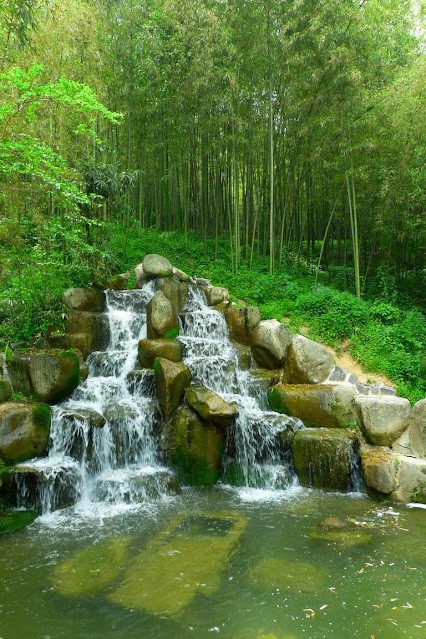
– Opening Hours: 09:00 – 18:00 (Daily)
– Admission Fee: 3,000 KRW (adults)
– Must-Do Activity: Try your hand at bamboo crafts
– Getting There (By Express Bus + Taxi)
Express Bus: Seoul Central City Terminal → Damyang Bus Terminal (3h 50m, 30,500 KRW)
Taxi: Damyang Bus Terminal → Juknokwon (7m, 6,000 KRW~)
📌 Visit the Official Website: 🔗 Damyang Juknokwon
4. Geumgang Pine Forest Road, Uljin, Gyeongbuk (울진 금강소나무숲길)
With over 500 years of history, Geumgang Pine Forest in Uljin is a pristine natural retreat. This peaceful forest is known for its ancient pine trees and stress-relieving trails.
– Opening Hours: 09:00 – 17:00 (Daily)
– Admission Fee: 2,000 KRW (adults)
– Important Notes:
Ø Guided tours only—visitors cannot enter alone.
Ø Pre-booking is required.
Ø Closed during fire prevention season: Dec 1, 2024 – April 30, 2025.
– Getting There (By Express Bus)
East Seoul Bus Terminal → Uljin Geumgang Pine Forest Bus Stop
※ Departs 4 times daily: 08:20, 10:50, 13:30, 16:50
📌 Make a Reservation: 🔗 Uljin Geumgang Pine Forest
5. Anmyeondo Natural Recreation Forest, Taean, Chungcheongnam-do (안면도 자연휴양림)
Located on Anmyeondo Island, this natural recreation forest offers stunning views of coastal pine forests. Walk through Hasong Forest, breathe fresh air, and enjoy the Solhyanggi-gil (Pine Fragrance Road) with scenic ocean views.
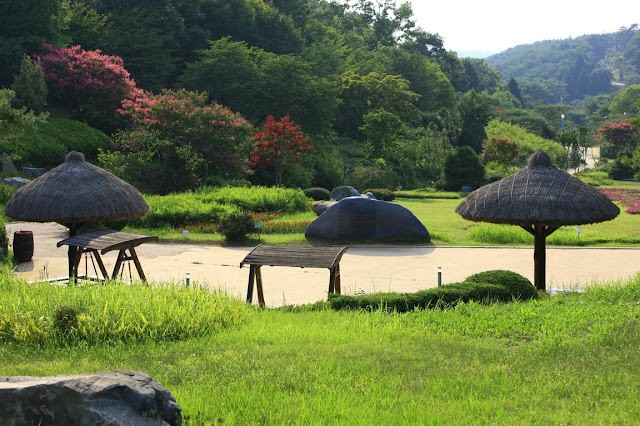
– Opening Hours Daily: 09:00 – 18:00 (Winter, Nov – Feb, Closes at 17:00)
– Admission Fee: 1,500 KRW
– Must-See Spots: Solhyanggi-gil & Observatory
– Getting There (By Express Bus + Taxi)
Express Bus: Seoul Central City Terminal → Anmyeondo Bus Stop (2h 20m, 19,200 KRW)
Taxi: Anmyeondo Bus Stop → Anmyeondo Natural Recreation Forest (5m, 9,000 KRW~)
📌 Make a Reservation: 🔗 Anmyeondo Natural Recreation Forest
❓ FAQ (Frequently Asked Questions)
Q1. Are Korean forests mostly wild or human‑planted?
A: Surprisingly, many of Korea’s mountains and forests are a result of post‑war reforestation efforts during the 1960s and 70s. While lush now, these forests are cultivated mainly rather than being untouched wilderness.
Q2. What’s the best way to navigate forests outside Seoul if I don’t speak Korean?
A: You don’t need fluency—knowing basics like “이곳 어떻게 가요?” (“How can I get there?”) helps a lot. Major hubs like Gapyeong, Jeju, Damyang, and Jinbu have good signage in English, and translation apps like Papago work well.
Q3. When is the ideal season to visit these forest destinations?
A: Spring brings camellias and fresh growth (especially in Jeju’s Hallasan Dulle-gil). Autumn offers stunning foliage. Winter visits are peaceful, but always check forest-specific opening times and closures—some sites close during fire months.
Q4. Do I need reservations for popular healing forests like Seogwipo or Gwangneung?
A: Yes. For places with daily caps or parking limits—like Seogwipo Healing Forest and Gwangneung Arboretum—you must reserve ahead online.
Q5. Is forest travel safe during Korea’s wildfire or typhoon seasons?
A: Always check local weather alerts. Korea has experienced severe wildfires and typhoon disruptions. Avoid these areas during extreme dry or stormy months—especially in spring or late summer.
6. Bijarim Forest, Jeju Island (제주 비자림)
Bijarim Forest is a unique natural wonder filled with thick, centuries-old nutmeg trees, designated as a Natural Monument. This serene forest road offers an immersive slow travel experience, connecting visitors deeply with nature.
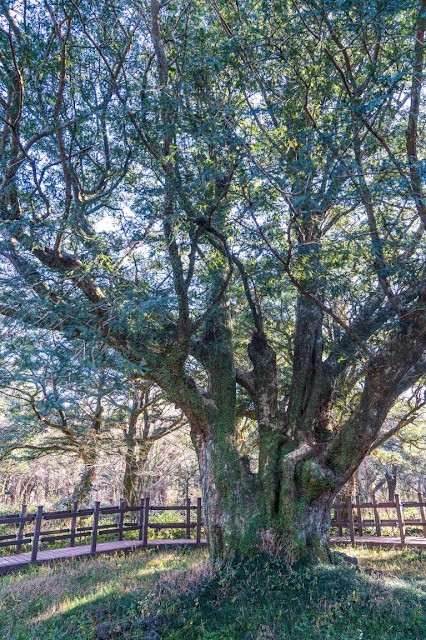
– Opening Hours: Daily 09:00 – 18:00 (Last admission: 17:00)
– Admission Fee: 3,000 KRW
– Must-See Spot: Bijarim’s photo zone
– Getting There (By Air + Taxi)
Airlines: Gimpo Airport → Jeju Airport (1h 10m, 50,000 KRW~)
Taxi: Jeju Airport → Bijarim Ticket Office (50m, 35,000 KRW~)
🔎 Tip: Planning to stay in Jeju for more than 2 days? Car rental is highly recommended!
7. Woljeongsa Fir Forest, Odaesan National Park (월정사 전나무 숲길)
A majestic avenue of fir trees leads to Woljeongsa Temple, forming a 1 km-long natural corridor of towering evergreens. This peaceful trail is perfect for a quiet walk, and visitors are encouraged to experience a Temple Stay to connect more deeply with Korean Buddhist culture.
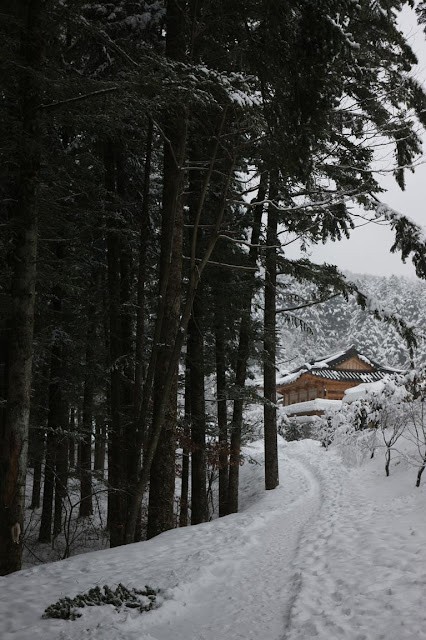
– Opening Hours: Open year-round
– Admission Fee: Free
– Must-See Spots: Fir Tree Avenue & Woljeongsa Temple
– Getting There (By KTX + Taxi)
KTX-Eum: Seoul Station → Jinbu (Odaesan) Station (1h 41m, 21,900 KRW)
Taxi: Jinbu Station → Woljeongsa Forest Road (20m, 35,000 KRW~)
📌 Learn more about Temple Stay: 🔖 Temple Stay Information
8. Mireuksan Forest Trail & Cable Car, Tongyeong (통영 미륵산)
The Mireuksan Mountain Trail offers spectacular panoramic views of Hallyeosudo (Hallyeo Marine National Park). A cable car ride to the top reveals one of Korea’s most breathtaking sunset spots, making it a must-visit for nature lovers and photographers.
– Cable Car Operating Hours
Ø Oct – Feb: 09:30 – 17:00
Ø Mar – Sep: 09:30 – 18:00
Ø Apr – Aug: 09:30 – 19:00
– Cable Car Fee: 10,000 KRW (round-trip)
– Must-See Spot: Sunset at Mireuksan Summit
– Getting There (By Express Bus + Taxi)
Express Bus: Gangnam Express Bus Terminal → Tongyeong Bus Terminal (4h 10m, 38,600 – 45,200 KRW)
Taxi: Tongyeong Bus Terminal → Mireuksan Cable Car Station (20m, 15,000 KRW~)
9. Hallasan Dulle-gil, Jeju Island (제주 한라산 둘레길)
Encircling Hallasan Mountain, the Hallasan Dulle-gil Trail is a well-maintained trekking course offering gentle walks through Jeju’s pristine nature. The trail is particularly stunning in spring when camellia flowers bloom, and in autumn, when colorful foliage covers the landscape.
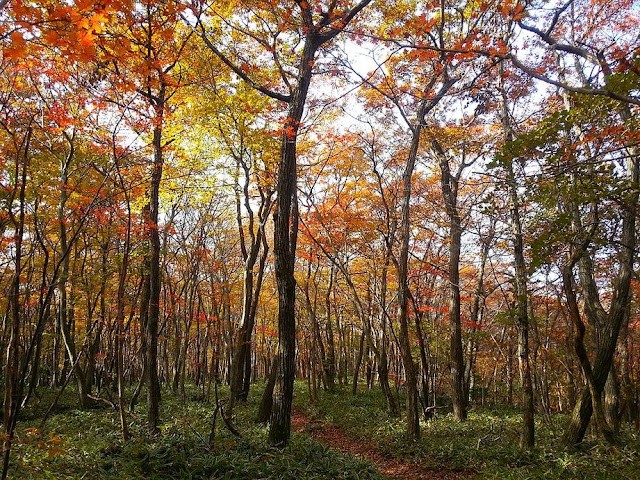
– Best Seasons to Visit:
Ø Spring: Enjoy the full bloom of camellia flowers.
Ø Autumn: Walk through a scenic trail covered in autumn foliage.
– Opening Hours: Open year-round
– Admission Fee: Free
– Must-See Spot: Spring camellia bloom
– Getting There (By Air + Taxi)
Airlines: Gimpo Airport → Jeju Airport (1h 10m, 50,000 KRW~)
Taxi: Jeju Airport → Hallasan Dulle-gil Section 1 (Cheona Forest Road) (30m, 20,000 KRW~)
🔎 Tip: Planning to stay in Jeju for more than two days? Car rental is highly recommended!
📌 Visit the Official Website: 🔗 Hallasan Dulle-gil
10. Gwangneung National Arboretum, Gyeonggi-do (광릉 숲, 국립수목원)
Gwangneung Forest, a UNESCO Biosphere Reserve, is home to diverse wildlife and rare plant species. It is a prime spot for eco-education programs, making it a fantastic destination for nature lovers, families, and photography enthusiasts.
– Opening Hours
Ø Summer (April – October): 09:00 – 18:00 (Last admission: 17:00)
Ø Winter (November – March): 09:00 – 17:00
– Admission Fee: 1,000 KRW
– Must-See Attractions: Rare animal observation & ecological education programs
– Getting There (By Subway + Taxi)
Subway: Seoul Station → Jinjeop Station (52m)
Taxi: Jinjeop Station → Gwangneung National Arboretum (15m, 10,000 KRW~)
❗ Important: Prior reservation is required for entry. If you are visiting by car, you must complete a reservation for parking access.
📌 Make a Reservation: 🔗 Gwangneung National Arboretum
